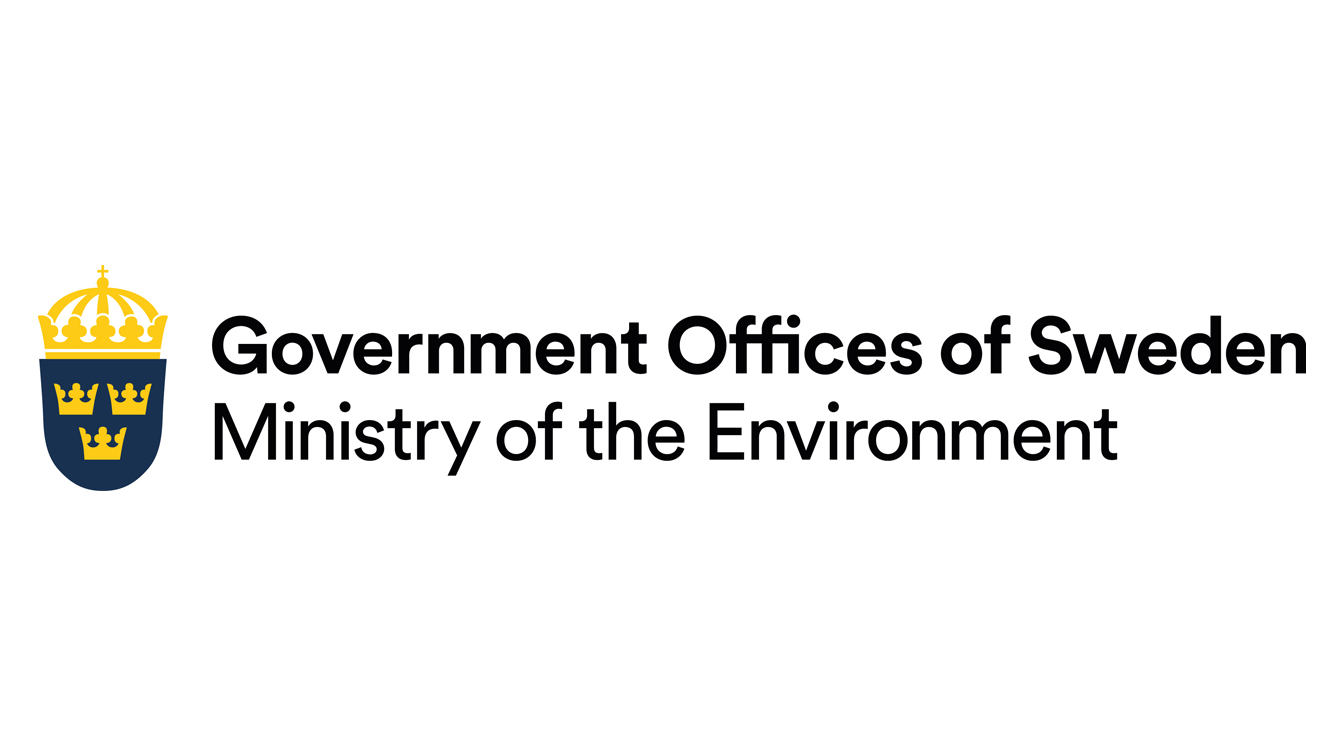The Precautionary Principle
Still Only One Earth: Lessons from 50 years of UN sustainable development policy
Critics call it a tool to halt progress, while advocates consider it essential to avoid severe damage to public health and the environment. Our team explores the origins of the precautionary principle, its impact on environmental law, and how it shapes our efforts to curtail climate change, biodiversity loss, pollution, and global poverty. (Download PDF) (See all policy briefs) (Subscribe to ENB)
If you were warned a meteor was going to crash at your home or workplace at a specific time, would you stay there? Would you leave, possibly losing a day’s work? Your decision would most likely depend on how much you trust the source of this information and on the extent of the damage the meteor could cause when it crashes.
If you decided to leave your home or office, you would be taking precautionary action, which is one of the expressions of the precautionary principle.
To make this example less theoretical, this precautionary action also applied in early 2020 to decision-makers who were considering the possible effects of COVID-19. When news reached authorities about the emergence of this new strain of coronavirus, there was not enough information about its impact. It would be fair to say it was difficult in January 2020 to imagine the global effects the virus would have. However, there was enough data available on similar viruses to inform the decisions that governments would have to take.

In some cases, governments took early precautionary measures, including travel restrictions, mandatory lockdowns, and quarantines, and saw fewer serious cases and deaths. Other governments did not exercise the same precautionary measures and their citizens have suffered the consequences of their inactions, facing illness, economic hardships, and death.
Those countries that did take effective early action did so without scientific certainty but decided to endure strict and costly measures— in many cases, having to restrict fundamental freedoms and rights of its citizens—to avoid possible horrific consequences. They exercised the precautionary principle.
Understanding the Precautionary Principle
Lawyers can be quite argumentative about the definition and use of a principle in law, but it is safe to say a principle is not a strict rule. It is a guide. A principle has the benefit of including theoretical explanations and fundamentals of law, which help lawmakers in making decisions. This means a principle, when included in a piece of legislation or a treaty, can direct how rules in that legislation or treaty should be applied.
Wiener (2007) describes the precautionary principle as one of the most prominent and possibly controversial developments in modern international environmental law. The principle is contained in many international instruments. Despite no uniform understanding of its meaning, the definition contained in Principle 15 of the 1992 Rio Declaration is widely recognized by states and provides practical guidance in the development and application of international law:
In order to protect the environment, the precautionary approach shall be widely applied by States according to their capabilities. Where there are threats of serious or irreversible damage, lack of full scientific certainty shall not be used as a reason for postponing cost-effective measures to prevent environmental degradation.
The components of the precautionary principle are still evolving. Some countries avoid using the term “principle,” preferring to call it a “precautionary approach,” since it carries less legal weight. In simple terms, the precautionary principle is an attempt to give the notion of precaution—understood as a form of addressing risk—legal status. Its core elements are the need for environmental protection; the presence of threat or risk of serious damage; and the fact that a lack of scientific certainty should not be used to avoid taking action to prevent that damage (Sands and Peel, 2012). Before the precautionary principle was widely recognized in the 1990s, the traditional approach to preventing environmental damage usually required taking into account the available scientific knowledge asserting the risk, thus applying the preventive principle, where the activities that might cause environmental harm are identified, but it is not certain that they will occur. This approach is used, for example, to establish standards to reduce the known effects of motor vehicle emissions on air quality.
Yet the precautionary principle, as described by Sands and Peel (2012), continues to generate disagreement as to its meaning and effect. On the one hand, some believe it provides the basis for early international legal action to address highly threatening environmental issues, such as ozone depletion and climate change. On the other hand, its opponents have decried the potential the principle has for over- regulating or limiting human activity, as we see in the criticism about the establishment of moratoriums on genetically modified organisms (GMOs) in some countries. The disagreement boils down to: does the principle dictate that uncertainty demands action … or does uncertainty justify inaction?

One of the most controversial elements of the principle is the shift of the burden of proof. Traditionally, the person claiming an activity could cause harm should produce proof to back up that claim. The precautionary principle reverses the burden of proof—the individual or entity proposing the activity must prove the activity is not harmful.
Historical Development
There are many pieces of legislation and treaties that include the precautionary principle. Most appear after the 1972 Stockholm Conference, which was the starting point for the introduction of concepts into international law that previously were only used in national legislation. The precautionary principle originated in Sweden, as Beyerlin and Marauhn (2011) explain, where a domestic statute (the Environmental Protection Act of 1969) introduced the concept of environmentally hazardous activities for which the burden of proof was reversed. Consequently, the mere risk of an environmental hazard was sufficient basis for Swedish authorities to take preventive measures or to even ban the activity in question. Other countries followed the Swedish example and “precautionary action”—a term Beyerlin and Marauhn prefer to use, since they consider it more appropriate and action-oriented—became a core principle in Europe, and today it is part of European Union law, as established in the Maastricht Treaty, which dictates that community policy on the environment shall be based, among others, on the precautionary principle.
The Community policy on the environment . . . shall be based on the precautionary principle and on the principles that preventative action should be taken, that environmental damage should as a priority be rectified at source and that the polluter should pay. Environmental protection requirements must be integrated into the definition and implementation of other Community policies.
In the international realm, the first instrument containing a semblance of the precautionary principle was the 1982 World Charter for Nature (UN General Assembly resolution 37/7), a declaration with no legally binding force. The Charter stated that “Discharge of pollutants into natural systems shall be avoided and… [s]pecial precautions shall be taken to prevent discharge of radioactive or toxic wastes.”
In 1985, the Vienna Convention for the Protection of the Ozone Layer included recognition by parties of the precautionary measures taken. This recognition was extended in 1987 when parties to the Montreal Protocol on Substances that Deplete the Ozone Layer stated their determination to protect the ozone layer by “taking precautionary measures to control equitably total global emissions of substances that deplete it.” Today, the Montreal Protocol is considered one of the most effective multilateral environmental agreements.
Following the adoption of the 1992 Rio Declaration, which was also the first international instrument to include a definition of the precautionary principle, many multilateral and regional agreements, as well as national laws, include precautionary action in some form.
Notable Examples
The basic duty to prevent environmental harm reaches into the future through the precautionary principle (Bodansky, 2017). Not only can it prompt inaction—such as choosing not to build a hydroelectric dam—but it can operate as a license to prevent actions that could lead to irreversible environmental damage for future generations.
For example, some states inspired by the principle established a moratorium on GMOs. These countries, including Peru and Germany, established policies banning, among others, the cultivation of GMO crops, based on the uncertainty of available science on the effects of GMOs on public health and ecosystems. Critics argued this moratorium would affect the availability of food, especially in developing countries, while proponents defended the cautious approach as an effort to prevent possible negative impacts on biodiversity and the health of people consuming genetically modified products. The action of establishing a moratorium could be considered a good example of the use of the precautionary principle.

The use of the precautionary principle is often accompanied by criticism. For example, after the 2011 Fukushima Daiichi nuclear disaster in Japan, people lost confidence in the security of nuclear power plants and authorities decided to close most Japanese facilities. This decision most likely prevented serious damage to the environment and public health. But critics noted the negative trade-offs from this decision. As a result of closing down an important source of electricity, Japan had to meet the resulting energy demand by importing fossil fuels, which led to higher energy prices and an increase of greenhouse gas emissions that contribute to global climate change.
Even though much of the science on the causes and effects of climate change is clear, there are many issues—particularly those related to future impacts and the deployment of geoengineering solutions—that remain uncertain. On this point, it is useful that the precautionary principle is included in the most important treaty related to climate change. Article 3 of the United Nations Framework Convention on Climate Change (UNFCCC) establishes that “parties should take precautionary measures to anticipate, prevent, or minimize the causes of climate change and mitigate its adverse effects.” It continues by affirming that a lack of full scientific certainty should not be used as a reason for postponing measures to prevent serious or irreversible damage.
The Parties should take precautionary measures to anticipate, prevent, or minimize the causes of climate change and mitigate its adverse effects. Where there are threats of serious or irreversible damage, lack of full scientific certainty should not be used as a reason for postponing such measures…
International courts have also progressively included the precautionary approach into their decisions and opinions. The International Court of Justice considered the principle in their 1995 Nuclear Tests case, concerning a dispute between New Zealand and France over nuclear testing in the South Pacific, where, although the principle was not included in the decision, it was referenced by two dissenting judges. Also, in the 1997 case concerning the Gabčíkovo-Nagymaros Project, the participating states evoked the principle. In this case as well, the court did not include the principle in its decision, but Judge Christopher Weeramantry, in a separate opinion, noted modern environmental law can learn from practices and principles of traditional systems, and referred to the following principles: trusteeship of earth resources, intergenerational rights, integration of development and environmental conservation, and duty to preserve the integrity and purity of the environmental and collective ownership of natural resources that should be used for the maximum service of people. This opinion serves as a reminder that environmental protection not only pre- dates the Stockholm Conference, but that humankind has been developing standards to compensate for their constant interference with nature (Alam et al., 2015).
Trade disputes have also included the precautionary principle, as shown in the beef hormones case before the World Trade Organization between United States and Canada against the European Union (EU). The latter banned the import of beef products containing artificial growth hormones on the grounds that there is no scientific consensus regarding their health effects. Since the EU could rely on its own rules—the precautionary principle was already incorporated into the 1992 Maastricht treaty—while the US and Canada did not have legal recognition of the principle, the case ended with the EU continuing its ban and the US and Canada maintaining their sanctions.
The contents of the precautionary principle are still evolving and, for this reason, even though many international and national courts have mentioned the precautionary principle, they have been careful not to base any decisions on it, leaving its exact legal meaning unresolved.
Selected environmental multilateral and regional agreements that contain the concept of precautionary action
- 1992 Convention on Biological Diversity
- 1992 United Nations Framework Convention on Climate Change
- 1992 United Nations Convention on the Protection and Use of Transboundary Watercourses and International Lakes
- 1994 Protocol to the 1979 Convention on Long-range Transboundary Air Pollution on Further Reduction of Sulphur Emissions
- 1995 Agreement for the Implementation of the Provisions of the United Nations Convention on the Law of the Sea of 10 December 1982 relating to the Conservation and Management of Straddling Fish Stocks and Highly Migratory Fish Stocks
- 1996 London Protocol to the 1972 Convention on the Prevention of Marine Pollution by Dumping of Wastes and Other Matters
- 2000 Cartagena Protocol on Biosafety to the Convention on Biological Diversity
- 2001 Stockholm Convention on Persistent Organic Pollutants
- 2018 Regional Agreement on Access to Information, Public Participation and Justice in Environmental Matters in Latin America and the Caribbean
Continuing Evolution of the Precautionary Principle
If we view progress as something that inherently involves risk, then risk should be incentivized. Otherwise, constant caution will lead to fewer decisions and less progress. On the other hand, risk of future damages may always carry some level of uncertainty, and exercising caution when assessing an action may be a wise choice. The ideal situation lies in finding a balance between caution and risk. In that sense, the precautionary principle serves as a tool that contains the necessary elements to achieve that balance: rather than slowing down development or obstructing decision-making, its application promotes reflection in the face of uncertainty, arguably leading to better outcomes.
When discussing the application of a concept of international law, which is thought to prevent serious harm to the environment, a counterpoint will usually arise to emphasize another principle—the need for economic development—intended to trump the need for environmental protection. During the 1972 Stockholm Conference, Indian Prime Minister Indira Gandhi focused attention on this core issue concerning the divide between economic development and environmental protection, when she famously declared that poverty and need are the greatest polluters, and therefore the environment cannot be improved in conditions of poverty, nor can poverty be eradicated without the use of science and technology.
The Stockholm Conference was a milestone for coordinating efforts between states toward environmental protection. One could argue it set the stage for the inclusion of many concepts that are now widely recognized in international environmental law. One of these concepts is the precautionary principle, recognized in national and international courts and legislation, but with its full understanding and use still under development, since it can operate as both an obstacle to development and a tool to safeguard the environment.
Multilateralism has given the world some great tools and solutions towards sustainable development, but today this system is showing a need to incorporate fresh views in order to achieve urgent collective decisions. The COVID-19 pandemic has shown the fissures in national and international systems, which serve as a strong call for institutions to be better suited to respond to global challenges, in particular climate change and the degradation of ecosystems. Well thought principles—like the precautionary principle—are useful foundations on the road ahead.
Works Consulted
Alam, S., Atapattu, S., Gonzalez, C. G. & Razzaque, J. (Eds.). (2015). International environmental law and the global south. Cambridge University Press.
Beyerlin, U. & Marauhn, T. (2011). International environmental law. Hart.
Bodansky, D., Brunnée, J. & Rajamani, L. (2017). International climate change law. Oxford University Press.
Chen, L. C. (2014). An introduction to contemporary international law: a policy-oriented perspective. Oxford University Press.
González Campos, J. D., Sánchez Rodríguez, L. I., & Sáenz De Santa María, P. A. (2003). Curso de derecho internacional público. Madrid: Civitas.
Hoppe, W. & Beckmann, M. (1989). Umweltrecht: juristisches Kurzlehrbuch für Studium und Praxis. Beck.
Sands, P. & Peel, J. (Eds). (2012). Principles of international environmental law, third edition. Cambridge University Press.
Wiener, J. B. (2007). Precaution, in Bodansky, D., Brunnée, J., & Hey, E. (Eds.). The Oxford Handbook of International Environmental Law. Oxford University Press.
Additional downloads
You might also be interested in
Web of resilience
Pakistan's development model has still not recognised the limits of the natural environment and the damage it would cause, if violated, to the sustainability of development and to the health and well-being of its population. Pakistan’s environment journey began with Stockholm Declaration in 1972. A delegation led by Nusrat Bhutto represented the country at the Stockholm meeting, resulting in the establishment of the Urban Affairs Division (UAD), the precursor of today’s Ministry of Climate Change. In setting the country’s environmental agenda, we were inspired by the Stockholm Principles, but in reality, we have mostly ignored them for the last five decades.
The Legacies of the Stockholm Conference
Fifty years after Stockholm, we face a triple planetary crisis of climate change, nature and biodiversity loss, and pollution.
The Roots of Forest Loss and Forest Governance
If lessons from past failures on deforestation are learned, forest protection could play a major role in reversing both climate change and biodiversity loss.
Pathways to Sustainable Cities
Urban planning needs to be inclusive and responsive to the needs of local communities and build on participatory approaches that foster the engagement of marginalized actors.



